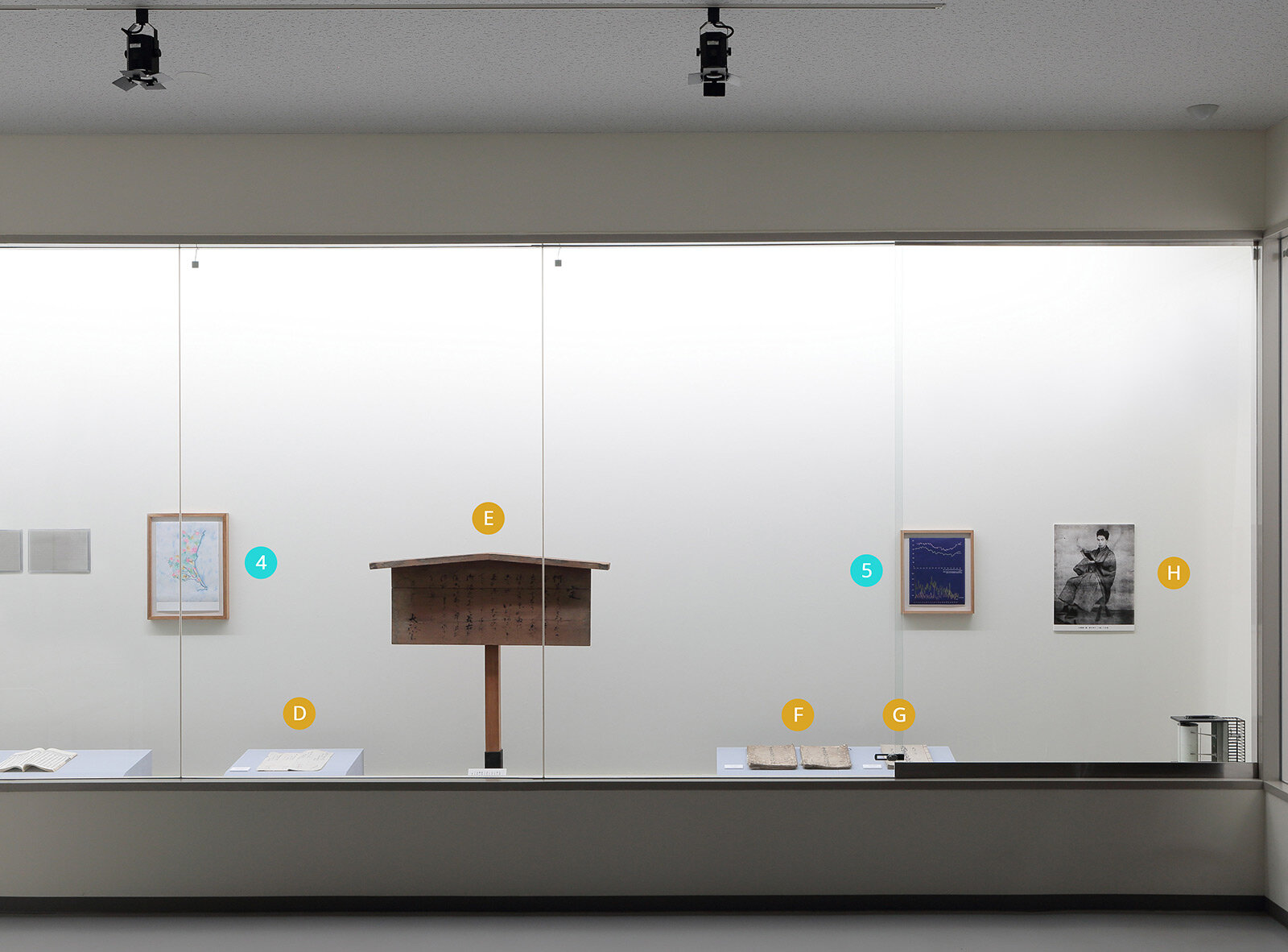
Kenpoku Art Festival | Hitachi City Museum, Japan | 2016
between the blank spaces of Hitachi Factories, I read poetry interwoven with tales of the barbarians, famines, and war sacrifices | 2016
Chung first approached the holding of historical artifacts at Hitachi City Museum while doing field research for the 2016 Kenpoku Art Festival in Ibaraki. Through these objects, she examined some of the most significant time periods in the history of Hitachi and Japan and created her artistic intervention into the collection by displaying her artworks interspersedly with her careful curation of the artifacts. Chung was particularly captivated by the Hitachi no Kuni Fudoki, a chronicle of Hitachi Province that was presented to the court by the local government in the 8th century. Chung found an English translation of the fudoki’s introduction and the sections on the Namekata and Kashima districts in an article by Mark C. Funke, published by Sophia University, Japan. Although the Hitachi Fudoki was required to contain mainly practical materials of the province, it reads more as a work of literature that was written in a language heavily influenced by Tang literary style. Compressed with many cultural details, historical narratives and mythical folklores, reading the three sections of the fudoki through an English translation is a translation process in itself – it requires imagination, approximation and reconstruction. With such approach, Chung’s immersive installation at the Hitachi Museum asks the viewer to fill in the gaps between certain periods in the history of Hitachi and Japan with historical moments and events experienced by people in other places, inside and outside of Japan. Chung’s intervention also suggests that the viewer contemplates between the blank spaces of their nation’s official account, or of any nation’s for that matter, the micro histories and hidden narratives that are told by the people other than the ruling oligarchy. Using Foucault’s mirror as a heterotopia and presenting works depicting the experiences of elsewhere with Hitachi’s, Chung’s complex installation guides the viewer’s gaze towards a parallel space, absent from the presence – It encourages the viewer to explore the representation of the absent, whether it’s the history of Japan’s nation building through conquering aboriginal groups as fleetingly mentioned in Hitachi no Kuni Fudoki, or the experiences of peoples and lands occupied by Japanese Imperial troops during WWII.












